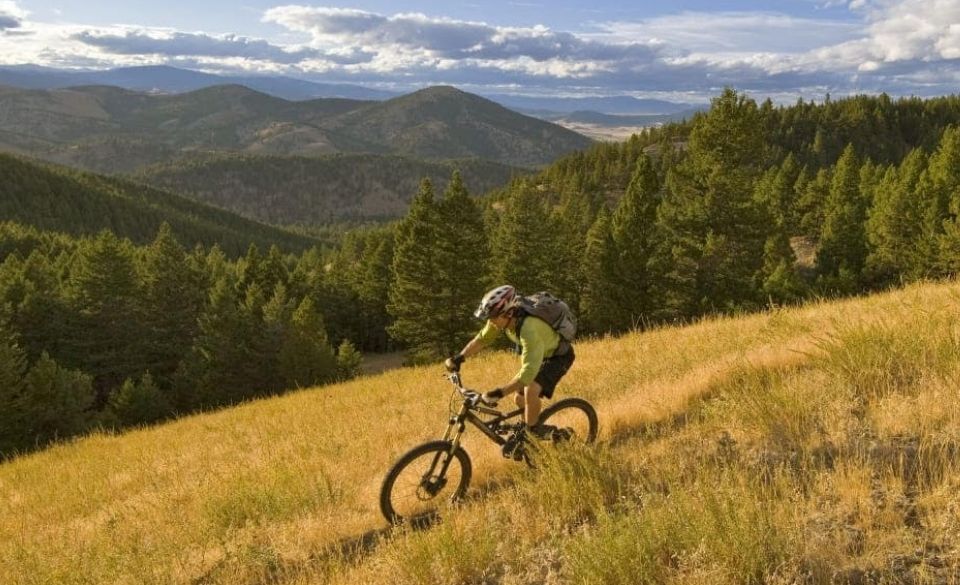
How to Choose the Right Mountain Bike for You
Mountain bikes or known as MTB are bikes built for riding off-road. Before buying a mountain bike, it is a good practice to know how to choose one. In this article, we will guide you on how to choose a mountain bike.
– Part 1: How To Choose a Mountain Bike
– Part 2: Types of Mountain Bikes
Part 1: How To Choose a Mountain Bike
Similar to other types of bikes, for mountain bikes, we also have a lot to learn about how they operate, how they vary, what to look for while purchasing, and a variety of other things. Below are some things that you need to consider before buying a mountain bike.
1.1 Usage Scenarios
Firstly, you will need to determine the type of riding you intend to do, the routes you want to
go, and the terrain you want your bike to perform well on. This can help you determine the
type of bike you require.
1.2 Wheel Size
There are many wheel sizes available, such as 26in, 27.5in, and 29in. 26in and 27.5in are the standard wheel sizes you see nowadays. Any new adult bicycle will likely have 27.5-inch wheels. The advantages of 29in wheels are greater momentum retention, simpler obstacle roll, and more traction. The larger wheel has a number of drawbacks, including the fact that it is more difficult to slow down, accelerate, and turn.
In general, bigger mountain bike wheels are better for uphill and in a straight line over rough terrain. Meanwhile, the smaller wheels are more agile and provide more suspension travel.
1.3 Bike Structure
A Mountain bike has a structure that consists of suspension, brakes, and transmission.
1. Suspension
They are two types of suspension: the semi-rigid frame and the full-suspension frame. The semi-rigid frame with a single front suspension is an essential component for mountain biking. The suspension fork makes it easy to absorb shocks and vibrations while ensuring that the wheel remains securely touching the ground. This frame is easier to clean, less expensive, and simpler to construct.
On the other hand, the full-suspension frame features front and rear suspension. It offers more comfort and shock absorption. It is also more costly than a semi-rigid frame and it is suitable for skilled riders.
2. Brakes
There are three types of brakes: mechanical, mechanical disc, and hydraulic disc brakes.
The most often used brake pads are mechanical brakes. They are lightweight, straightforward to use, and easy to maintain. The mechanical disc serves as a brake in any weather condition. It offers a robust braking system. Lastly, the hydraulic disc brake provides excellent control over your bike, but they are heavier and require more maintenance. The hydraulic disc brake is usually used in sports events.
3. Handle / Grip
To choose a good handle or grip, you have to make sure it is comfortable, adapted to the size of your hand, and provides a good piloting sensation.
1.4 Test The Bike
One of the most crucial things to do before purchasing your bike is to test it. Many shops allow you to test your bike in the parking lot. It’s worth the time and effort to find the proper one for yourself if you’re serious about riding. After riding, you should be able to determine which bike is the most suitable one for you.
Part 2: Types of Mountain Bikes
There are a few types of mountain bikes such as:
2.1 Full-Suspension Mountain Bike
A full-suspension mountain bike has a rear shock as well as front and rear suspension forks.
The rear shock absorber improves the rider’s stability and control when navigating challenging terrain. Aside from that, full-suspension mountain bikes perform far better on difficult terrain. This is mostly due to the traction of the rear suspension.
Furthermore, full-suspension bikes offer a bigger margin of error because of the extra
flexibility at the rear end. They increase traction, steering, and control. They also reduce the risk of making a mistake on more challenging terrain.
2.2 Hardtail Mountain Bike
A hardtail mountain bike, also known as a hardtail bicycle, is a type of bike designed for riding on a variety of off-road terrains. Hardtail mountain bikes have a front suspension fork but no rear shocks. Hardtail mountain bikes are lighter and less costly than full-suspension mountain bikes and are ideal for off-road use.
Hardtail bikes are great for riding in a range of terrains and weather situations. They will function
well in practically any condition because of their adaptability and durability.
2.3 Single Speed Mountain Bike
A single-speed mountain bike features only one gear, a front chainring, and a rear sprocket. It is lacking gear shifters, front and rear mechs, and gear cables. The bike’s lightweight and simple design make it easy to maintain.
2.4 Electric Mountain Bike
An electric mountain bike, or e-MTB, increases the amount of power you put into the bike by pedaling. A small motor positioned beneath the frame near the cranks powers an electric mountain bike. An electric lithium-ion battery powers the motor and it only produces power when you pedal. It simulates the experience of riding a traditional bike by increasing the force of each of your pedal strokes.
A variety of factors influence the range of an electric mountain bike. The battery size, the motor’s performance, the rider’s weight, the terrain, and even the temperature. All of these factors might affect how far your electric bike can ride on a single charge. The harder the motor runs, the more battery power it requires. Also, the faster the battery drains, the more power the device consumes.
Part 3: Summary
A mountain bike or MTB is a bike that is used on off-road terrain. A mountain bike also differs into a few types such as full-suspension, hardtail, single-speed, and electric. You can find more information about mountain bike types at the Cool Mountain bikes website. Before buying a mountain bike, there are things that you have to consider such as the usage scenarios, the wheel size, and the bike structure. After that, the last step is to test out the
bike. Eventually, you should know which bike is the most suitable one for you.


